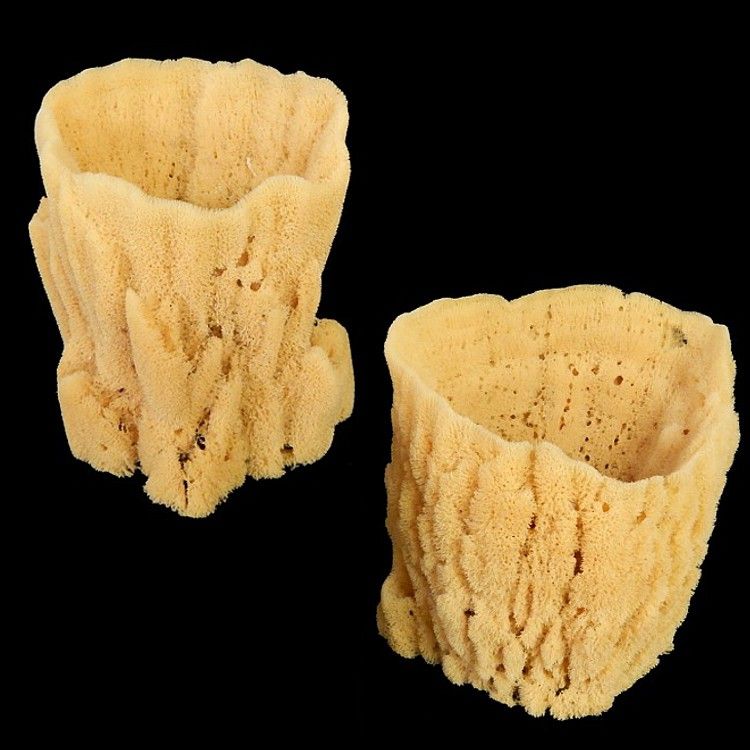SPONGE KNOWLEDGE BASE
Sea Sponges
Sponge phylum: Porifera.
Sponges are the simplest many-celled animals. Their shapes vary from tiny cups, broad branches, or tall vases to encrustations and large, rounded masses. Sponges can range in color from bright hues in shallow waters to deeper water grays and browns. Changing growing conditions can sometimes cause problems identifying sponge types.
A sponge consists of cooperating community of cells. The cells each perform different functions. The cells surround a system of canals through which water is pumped. This provides the basis for the sponge's life functions. Water enters the canals through small pores that dot the surface of the sponge. It then passes into chambers lined with collar cells, each with a sticky funnel-shaped collar. From each collar extends a flagellum or hairlike structure whose beating creates a current. The combined action of all collar cells drives water through the canals and out of the sponge through a larger pore. The collar cells trap food particles brought in with the water and may digest or pass the food to other cells for digestion. The flow of water through the water also brings oxygen and removes carbon dioxide and other waste products. A simple sponge has one chamber and one osculum. Sponges more complex have many of each.
Most sponges have a skeleton that is a meshwork of tough protein or of microscopic hard splinters or a combination of both. Spicules are either limy or glasslike and appear in a variety of forms. Although too small to be helpful in field identification.
Sponges reproduce both asexually and sexually. Asexiual reproduction occurs when a sponge constricts off a tip of one of its branches (budding) or when parts are naturally broken off. These fragments regenerate into complete sponges. Many sponges have both male and female reproductive structures. Clouds of sperm are released into the water and are swept into another sponge; there they fertilize the eggs. The eggs then develop into swimming larvae; which are flushed from the parent's canals by currents. The larvae settles on a suitable surface and attaches itself; eventually turning into an infant sponge.
